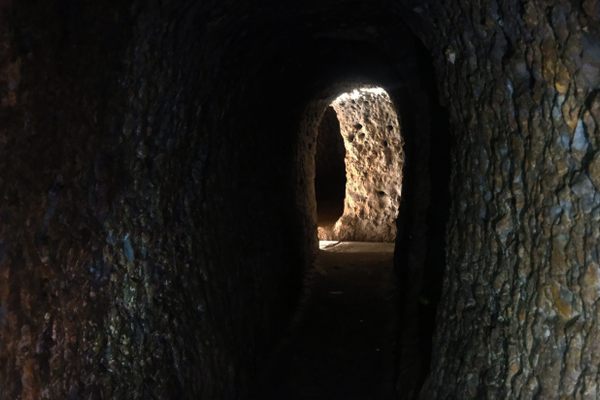About
The hunt for treasure on Oak Island has been going on for over two hundred years.
Without a single return, and conflicting theories of what hunters are actually looking for, the so-called Money Pit in Nova Scotia is one of the most incredible self-perpetuating goose chases in the world.
In 1795, a teenager named Daniel McGinnis found an oval-shaped recession in the ground on the island. With little evidence that there was anything to be discovered, McGinnis started digging in the area and subsequently hit wooden planks every ten feet. The discovery of the planks led McGinnis and his friends to believe the pit was man-made and they began what would become a long-standing tradition of treasure seeking in the area.
From the beginning of the 19th century onward, many companies formed to begin their own digging expeditions in the pit, each discovering more "evidence" and attributing new theories to the region. Errol Flynn, John Wayne, and Franklin Roosevelt were at one point each involved in the hunt and held their own theories as to the pit’s contents.
Some believed pirate treasure lay just below the next layer of soil. Others believed Marie Antoinette’s lost jewels were surely buried there right after the French Revolution. Another theory even posited that Francis Bacon had stored documents in the pit proving himself as the author of Shakespeare’s plays. There are many other theories one big one is that "The Arc Of the Covenant" lies at the bottom.
Despite the wild theories, little has ever come out of the pit. Everything ever found in the pit has been attributed to some treasure theory. A cavern found during the dig was deemed a booby trap. Another tunnel leading out of the pit to Smith’s cove was deemed a secret floodway. Any wood found in tunnel was immediately considered a part of the pit’s foundation.
However, just enough evidence has been found to keep people digging. Among the biggest discoveries were a set of stone inscriptions found 90 feet below the earth. Symbols on the stones were translated as “forty feet below lie two million pounds.” Even more promising, was the alleged discovery of a few gold pieces.
As with many of the discoveries from the pit, the inscriptions and gold themselves disappeared, and have not been seen in over fifty years, thus little modern investigation on them can be done. Researchers have even begun to formulate theories as to where the inscriptions and gold are now, creating yet a new mystery tangent to follow. This of course, is the story of the Money Pit. Each new theory or discovery comes with yet more mystery and controversy and less hard evidence or treasure.
Further complicating matters of the pit, excavations have now gone 190 feet into the earth since the late 18th century. In many ways, the expeditions themselves have become a part of the history of Oak Island. It is often difficult to discern what the creators of the pit left and what belonged to treasure hunters, and a stone inscription marked “1701” is even considered by some to be a hoax left by past hunters.
Whether the pit is a natural sinkhole, a booby-trapped pit filled with gems, or one of the worlds greatest follies may forever remain a mystery. In 2010, a final treasure hunt was initiated, found nothing, and the government passed the Oak Island Act, banning all commercial treasure hunting on the island. However, in 2011 a new Oak Island Treasure Act invited the hunt to continue, with permission granted from the Minister of Natural Resources.
Related Tags
Community Contributors
Added By
Published
June 6, 2011
Sources
- Mysteries of Canada: The Treasure Pit of Oak Island: http://www.mysteriesofcanada.com/Nova_Scotia/oakisland.htm
- The Mysterious & Unexplained: What Lies at The Bottom of The Money Pit? http://www.activemind.com/Mysterious/Topics/OakIsland/index.html#Timeline
- The Story of Oak Island's Mysterious Treasure: http://www.theoutlaws.com/gold3.htm



























